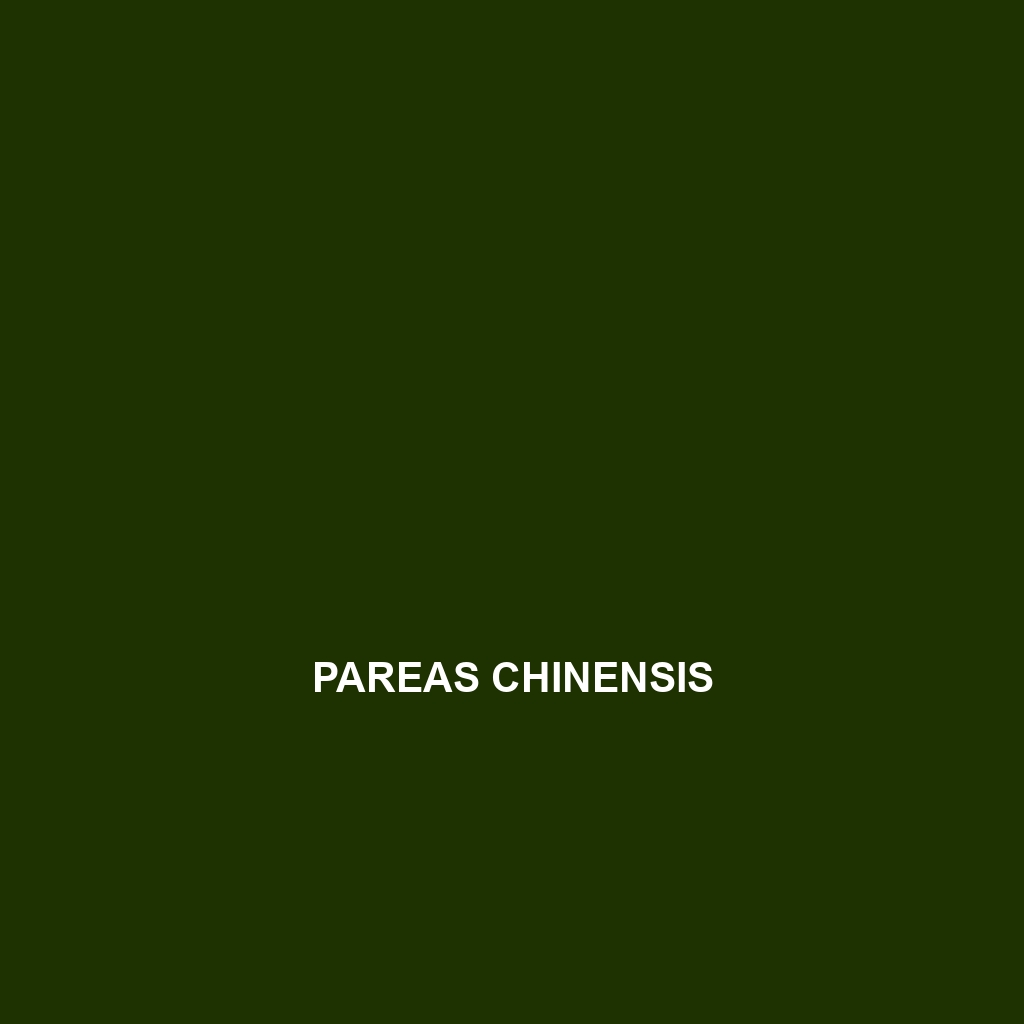Common Name
Pareas chinensis
Scientific Name
Pareas chinensis
Habitat
Pareas chinensis, commonly known as the Chinese slug snake, primarily inhabits tropical rainforests and temperate forests across various regions in Asia. Notably found in countries such as China, Vietnam, and Laos, these snakes thrive in humid environments characterized by high levels of rainfall and rich biodiversity. They favor areas with abundant foliage, which provides excellent camouflage and hunting opportunities. The average temperatures in their natural habitats range from 20°C to 30°C (68°F to 86°F), creating suitable conditions for their survival.
Physical Characteristics
Pareas chinensis is known for its distinctive physical characteristics. This species typically reaches lengths of 60 to 90 centimeters (about 24 to 35 inches), with some individuals documented at over a meter long. The body is slender and elongated, allowing for agility in navigating dense vegetation. The coloration varies, featuring shades of brown, grey, and green that help blend seamlessly into their surroundings. Unique among snakes, they possess smooth scales that contribute to their sleek appearance, and some individuals may exhibit a slightly flattened head, which is an adaptation that assists in burrowing through leaf litter.
Behavior
The behavior of Pareas chinensis is marked by its primarily nocturnal activity, making it a fascinating subject of study for researchers interested in nocturnal behavior. During the day, they often remain hidden among foliage or underground, emerging after sunset to hunt. Their social interactions are limited, as they are solitary creatures, coming together primarily during the breeding season. Observations have noted their unique habits such as the ability to twist their bodies to access prey hidden within tight spaces, a behavior that enhances their hunting success.
Diet
Pareas chinensis is predominantly insectivorous, with a diet largely consisting of small invertebrates, including slugs, earthworms, and various insects. Their feeding patterns are adaptive, relying on the availability of prey within their habitats. Using their keen sense of smell, they actively seek out food, often employing ambush tactics to capture unsuspecting prey. This species plays a crucial role in controlling insect populations, thereby contributing to the ecological balance of their environment.
Reproduction
The reproductive cycle of Pareas chinensis typically occurs during the warmer months of the year, with mating seasons usually peaking in late spring. After a gestation period of about three months, females give birth to live young, which distinguishes them from many other snake species that lay eggs. The number of offspring can vary, often ranging from 4 to 10 snakelets. Parental care is minimal; however, newborns are well-equipped to fend for themselves shortly after birth, reflecting the survival strategies developed in their natural habitat.
Conservation Status
Currently, Pareas chinensis is classified as Least Concern on the IUCN Red List, largely due to its wide distribution and stable populations in many regions. However, potential threats include habitat destruction due to deforestation, urbanization, and agricultural expansion. Conservation efforts are ongoing in certain areas to ensure the protection of their natural habitats and maintain biodiversity. Awareness programs are also being implemented to educate local communities about the ecological importance of this species.
Interesting Facts
One of the most intriguing aspects of Pareas chinensis is its unique defense mechanism. When threatened, the snake has been observed to flatten its body and display a series of coloration changes, which can deter potential predators. Furthermore, their ability to locate and consume hidden prey exemplifies their specialized hunting adaptations. These fascinating traits highlight the creature’s evolutionary advantages and its specialized role within its habitat.
Role in Ecosystem
Pareas chinensis plays a vital role in its ecosystem as both a predator and prey species. By controlling insect populations, they help maintain a balanced food web in their environment. Additionally, they serve as a food source for larger reptiles and birds. Their presence is indicative of a healthy ecosystem, making them crucial for ecological monitoring and research. As a potential keystone species, the conservation of Pareas chinensis is essential for sustaining the biodiversity within tropical and temperate forests, which ultimately supports numerous other species.
This detailed species description is structured in HTML format, optimized for search engines, and provides comprehensive insights into the characteristics, behaviors, and ecological significance of the snake Pareas chinensis.
